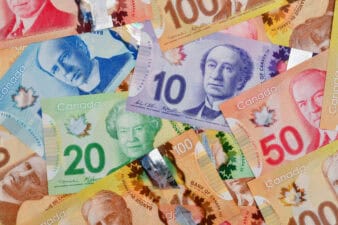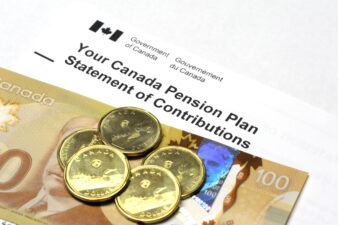The year 2020 was full of ups and downs. People were bound to their homes to avoid getting infected. The Canada Revenue Agency (CRA) offered several taxable cash benefits to deal with the COVID-19 pandemic. These benefits include the 2,000/month Canada Emergency Response Benefit (CERB) and the Canada Recovery Benefit (CRB). They increased the taxable income for many Canadians. But you can make these benefits tax-free with the CRA’s age amount tax credit and basic personal amount (BPA) tax credit. With these tax benefits, the CRA ensures that no Canadian is left behind.
One tax credit can make your CERB tax free
If you are a Canadian aged above 19 and have a Social Insurance Number (SIN), you can get the BPA tax credit. For 2020, the BPA limit is $13,229 after adjusting for inflation. You get a tax exemption of 15% on the BPA amount, which comes to $1,984. Eligible Canadians received up to $14,000 in the CERB. Since this benefit is taxable, it entails a federal tax bill of $2,100 (15% of $14,000). By using the BPA tax credit, you can almost free your CERB payments from the CRA’s tax claws.
One tax credit that can make your CRB tax free
The CRA replaced the CERB with the CRB on September 27, 2020. All eligible Canadians received up to $5,400 after-tax in the CRB. This benefit entails a federal tax bill of $810 (15% of $5,400). If you turned 65 in 2020, you can make your CRB also tax-free by claiming the age amount tax credit.
For 2020, the CRA has set the age amount as $7,637. Just like the BPA tax credit, the CRA calculates the federal tax rate of 15% on the age amount. You can get up to $1,146 (15% of $7,637) as the age amount tax credit if you earned a maximum of $38,508 in 2020. If you earned above $89,421, your age amount will come down by 15% of your surplus income. Your tax credit becomes zero on the net income of more than $89,421.
Let me explain this through an example. Rosie turned 65 in 2020 and earned $55,000. Her taxable income is $16,492 ($55,000 – $38,508) more than the age amount threshold. She can get the tax credit on the age amount of $5,163 ($7,637 – $2,474, which is 15% of the surplus income). This will bring down her 2020 federal tax bill by $774 and make her CRB almost tax-free.
Increase your tax savings with the TFSA
The above two tax benefits will bring you up to $3,130 in tax savings. You can put these savings in a dividend stock through your Tax-Free Savings Account (TFSA). The dividend income earned in this account can help you pay a portion of your taxes. This way, your TFSA tax fund will relieve your April burden of paying income tax.
A good stock for your TFSA tax fund is Enbridge (TSX:ENB)(NYSE:ENB). Its robust business model has generated regular cash flows and even increased them. The company transfers a portion of its cash flow to shareholders as dividends. It has an average dividend yield of 7%. If you invest your tax savings of $3,130 in Enbridge, you will earn an annual dividend income of nearly $220.
There is a high probability that Enbridge will continue its 26-year history of paying incremental dividends. Your TFSA income of $220 will rise to around $400 if it increases its dividend per share at a compounded annual growth rate of 6% for the next 10 years. This will be your tax-free income as all earnings in the TFSA are exempt from tax.







